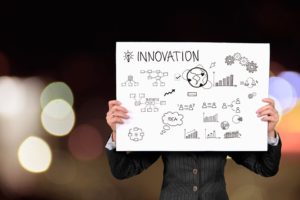Agile Humanitarian HR - Innovation
 In my introduction on being an agile human resources unit, I listed the four qualities of HR agility as being adaptability, innovation, collaboration and speed. You can find my post where I talk about adaptability. This post focuses on innovation.
For humanitarian organizations to survive and thrive in the 21st century, they need to be innovative in the delivery of their services to their beneficiaries. Beneficiaries are no longer seen as the poor recipients of aid, but as our “customers”. Yes, they are our clients and they need to be treated as such. We need to think of our staff in a similar way. Staff are the “customers” of our services. And our customers vary from being international or national staff, supervisors, and technical staff to drivers, guards and cleaners who may not be literate. Our customers are very diverse!
In my introduction on being an agile human resources unit, I listed the four qualities of HR agility as being adaptability, innovation, collaboration and speed. You can find my post where I talk about adaptability. This post focuses on innovation.
For humanitarian organizations to survive and thrive in the 21st century, they need to be innovative in the delivery of their services to their beneficiaries. Beneficiaries are no longer seen as the poor recipients of aid, but as our “customers”. Yes, they are our clients and they need to be treated as such. We need to think of our staff in a similar way. Staff are the “customers” of our services. And our customers vary from being international or national staff, supervisors, and technical staff to drivers, guards and cleaners who may not be literate. Our customers are very diverse!
Like any business, you need to put yourself in the shoes of your customer, in this case, your staff. Some questions you need to ask yourself are:
- Are our services relevant and easy to use?
- Does our work with staff have a human touch?
- Does our staff seek us out for assistance and do they enjoy working with us.
An effective way to learn about the needs of your employee population and discover innovative and engaging solutions to those problems is to utilize a practice called Human Centered Design. This practice in the humanitarian sector has been popularized by IDEO.org, an organization that designs products and services to improve the lives of people living in poverty or vulnerable communities. Other organizations also incorporate human centered design into their product and service development such as Acumen and Google.
THE HUMAN CENTERED DESIGN PROCESS FOR INNOVATION
The human centered design approach to problem solving and service improvement provides a way to focus on employees and their work experiences to find effective and innovative solutions. The organizations that practice human-centered design tend to have similar processes that generally fall into the following three phases:
1. Discovery/Inspiration
What is the problem or challenge you want to address? Or what service activity do you want to improve? Who should you be talking to? In this phase, Google staff look to their users, or customers. They look and listen and empathize with their users. Having an empathetic approach is key to understanding. Know your customer. What is the challenge? How do I approach it? Who do I talk to?
2. Ideation
Review what you have learned in the discovery phase. Brainstorm ideas—big, bold and crazy ideas! Don’t pre-judge any of the ideas and don’t limit the number of ideas. Let the ideas flow. Google innovators think “10x” or they try to improve a process or product by 10 times! To learn how to run an effective brainstorming session, click on this brainstorming link: https://www.themuse.com/advice/how-to-brainstorm-like-google Try this method at your next brainstorming session.
3. Prototype/Implementation
After you have decided upon an idea, you need to test it. Share it with your users and get feedback. Be willing to make changes based on feedback. If it really isn’t working as you had planned, don’t be afraid to throw it out and start over.
For more information on the Human Centered Design Process, check out the list of free learning resources in the Resource section. You will find useful tools by IDEO and Acumen.
I look forward to hearing about the innovative ways you are tackling challenges in your organization!